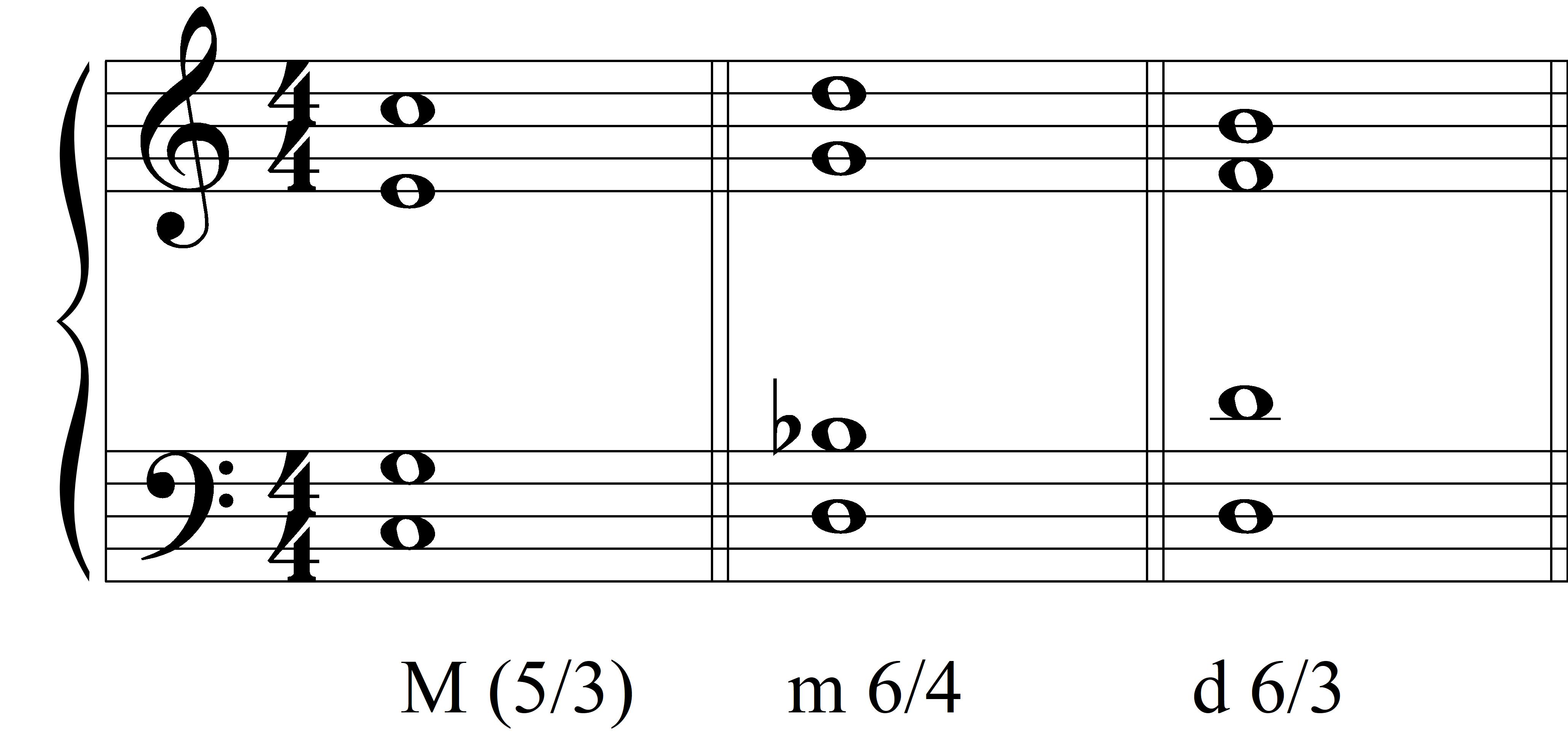Integrated Aural Skills 2019-20
Compound Triads
Triads in Context
You are already adept at identifying simple triads in all the inversions. You have also proven that you can identify compound chords in root position and inversions within the context of four-part harmonic dictations in Aural Skills III.
A New Skill Level
In Aural Skills IV, we will add an extra level of skill to your perception of triads by hearing them in SATB voicing outside of a context. No notation will be required.
Procedure for identifying compound triads
- Identify and write down the chord quality. This should be easy review.
- Find the root of the chord. For example, if you’ve identified that the triad is major, focus your hearing on do. (See below for review of the solfege to use for your triads.)
- Compare the root note you identified with the bass note of the chord. Is it the same pitch class? If not, which note of the triad is it?
- Analyze the chord accordingly, i.e. do in the bass indicates root position, mi in the bass indicates M 6/3, sol in the bass indicates M 6/4.
- In doubt? Remember the doubling rules (see below) for triads in inversions. They will help you sort through information.
Examples

-
The first example is a major triad in root position. Notice that the root is doubled. In any case, if you can hear the P5 between bass and tenor, that’s a dead giveaway that the chord is in root position.
-
Next is a minor triad in second inversion. Notice that the fifth is doubled. Notice the intervallic relations of the other voices too, such as the perfect fifth between soprano and alto voices that indicates the root and fifth of the chord.
-
The third example is a diminished triad in first inversion. Notice that the third (re) is doubled. We don’t want to have either note of the tritone doubled because of the instability.
Review: solfege of the four types of compound triad
- Major: do mi sol (or one of the other common contextual uses of the major triads, such as sol ti re)
- Minor: do me sol (or another common contextual use, such as la do mi))
- Diminished: ti re fa (also acceptable: re fa le)
- Augmented: sol ti ri (also acceptable: me sol ti)
Review: Triad Doubling Rules in Part-Writing
- Major and minor triads in root position: the root will be doubled
- Major and minor triads in first inversion: the soprano note will generally be doubled
- Major and minor triads in second inversion: the fifth will be doubled
- Diminished triads: the third will be doubled, except when the fifth is in the soprano voice, in which case the fifth will generally be doubled.
- Augmented triads: in theory, any note may be doubled, since acoustically any note could be the root. In this class, the bass note will usually be the one that is doubled.